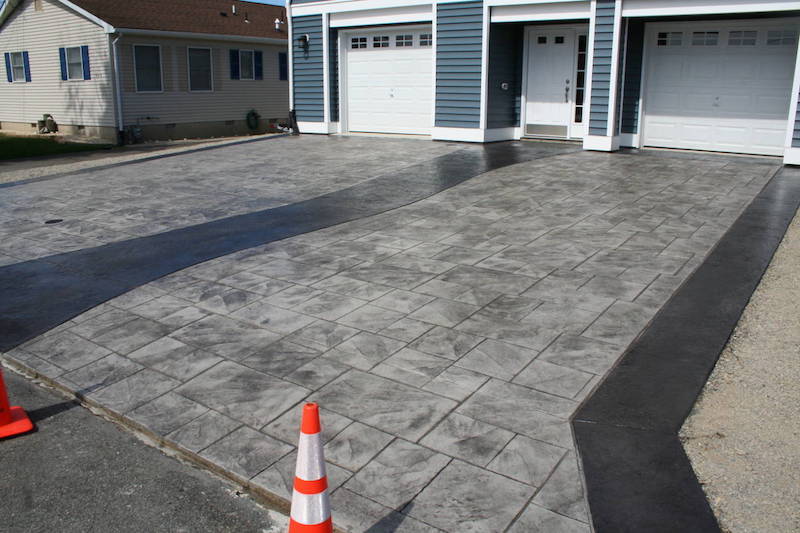Discover Legendary Concrete Brentwood: Unmatched Quality and Service
The Eco-friendly Choice: Concrete Sidewalks for Your Neighborhood
Selecting concrete for your community sidewalks can make a substantial difference in terms of sustainability and eco-friendliness. Let's check out why concrete walkways may be the environmentally friendly choice your area needs.
Benefits of Concrete Sidewalks
When thinking about the installation of pathways in an area, the advantages of picking concrete over various other materials are various and significant. Concrete sidewalks provide longevity, withstanding heavy foot traffic, weather condition fluctuations, and ecological components better than different materials like asphalt or crushed rock.

Sturdiness and Long Life
Exactly how can concrete pathways outshine various other products in terms of durability and durability? Concrete walkways are renowned for their outstanding resilience and long life contrasted to different products like asphalt or pavers.
Furthermore, concrete's durability reduces the need for frequent fixings or substitutes, making it a cost-efficient and sustainable selection for area walkways. By investing in concrete pathways, areas can enjoy a dependable and durable infrastructure that enhances the general visual charm and functionality of the location.
Low Maintenance Needs
Concrete sidewalks stand out for their marginal maintenance needs due to their long lasting nature and long-lasting performance. Unlike alternate products that might need frequent repair work or substitutes, concrete pathways use a cost-effective option that demands little upkeep over time.
Regular maintenance for concrete walkways usually entails straightforward tasks such as regular cleansing to get rid of debris and periodic sealing to secure the surface. In contrast to materials like asphalt or pavers that might move, split, or break down more easily, concrete walkways preserve their architectural stability with very little intervention. In addition, any kind of repairs that might be needed are usually local and can be dealt with quickly, minimizing both the time and cost related to upkeep.

Ecological Advantages
With an emphasis on sustainability and eco-friendliness, concrete pathways use noteworthy ecological advantages that add to a greener neighborhood facilities. Concrete is a product understood for its sturdiness and long life, decreasing the need for constant substitutes. This long life reduces the environmental impact connected with the production and transportation of new materials for pathway building. Additionally, concrete pathways have a high solar reflectance index, indicating they show a considerable amount of sunshine rather than taking in and retaining heat. This top quality assists mitigate the metropolitan warmth island impact, reducing energy intake for cooling down structures and enhancing total comfort in metropolitan locations.
Additionally, concrete is a porous material that permits water to infiltrate right into the ground, lowering stormwater overflow and aiding in groundwater recharge. This assists avoid have a peek at these guys disintegration, reduce flooding, and maintain the all-natural equilibrium of water supply in the neighborhood. By selecting concrete sidewalks, areas can make a sustainable choice that favorably affects the atmosphere and enhances the high quality of life for residents.
Enhancing Neighborhood Sustainability
By focusing on sustainable facilities options, areas can cultivate a harmonious equilibrium in between ecological awareness and neighborhood advancement. Enhancing community sustainability includes a multifaceted approach that goes past simply the environmental advantages of concrete pathways. Executing green rooms, promoting energy-efficient methods, and cultivating a feeling of community interaction are crucial components of producing a sustainable area.
One method to enhance community sustainability is via the assimilation of absorptive concrete walkways. These sidewalks allow rainwater to seep into the ground, decreasing stormwater overflow and reducing the stress on municipal drain systems. Concrete Contractor. By integrating absorptive pathways, neighborhoods can enhance water top quality, minimize flooding risks, and boost overall Concrete Companies Near Me ecological durability
Furthermore, promoting alternate transport methods such as strolling and cycling can substantially minimize carbon emissions and advertise a much healthier lifestyle among homeowners. Producing risk-free pedestrian pathways, bike lanes, and marked greenways can encourage locals to depend much less on cars, additionally adding to the community's sustainability visit site objectives.
Verdict
In verdict, concrete pathways offer numerous benefits for neighborhoods, including toughness, reduced upkeep requirements, and environmental advantages. By choosing concrete sidewalks, communities can boost their sustainability and add to a more environment-friendly atmosphere. It is clear that concrete sidewalks are the perfect choice for neighborhoods wanting to boost their framework in a lasting and environmentally pleasant way.
When taking into consideration the setup of walkways in an area, the benefits of selecting concrete over various other materials are various and substantial. Additionally, concrete's sturdiness reduces the requirement for constant repairs or replacements, making it a affordable and sustainable selection for neighborhood pathways (Concrete Contractor).With an emphasis on sustainability and eco-friendliness, concrete walkways provide notable ecological advantages that add to a greener neighborhood framework. Enhancing community sustainability entails a diverse technique that goes beyond simply the ecological benefits of concrete walkways.In final thought, concrete pathways supply various benefits for areas, including sturdiness, reduced maintenance needs, and ecological benefits